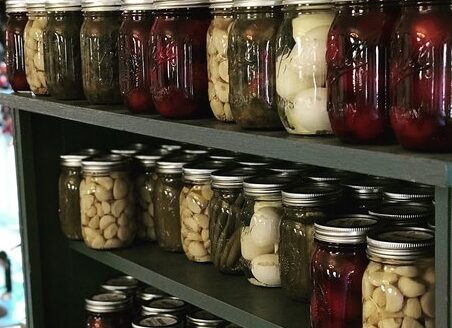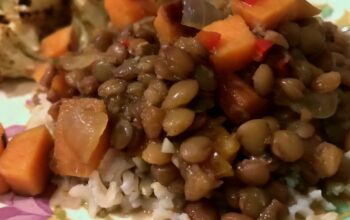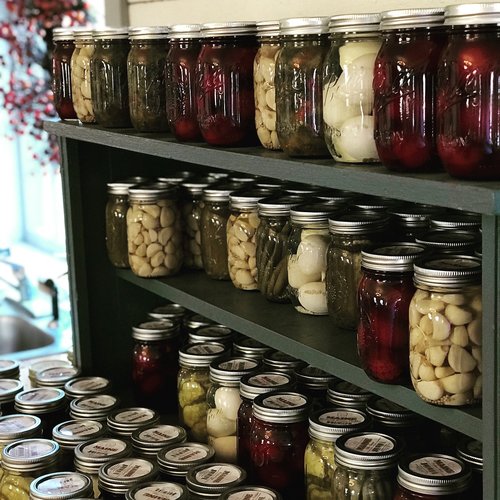
Did you know you can pickle your veggies with just salt water? For many health enthusiast this is the preferred method because it contains more probiotics and digestive enzymes. It’s easy too! Here is a quick how-to on fermenting almost any veggie.
You Will Need:
- 1 sterilized 32 oz glass pickling jar with secure lid
- 32 oz of distilled water (4 cups)
- 2 tablespoons pickling salt (or sea salt)
- Enough veggies to tightly pack your jar, shredded or cut in evenly sized pieces
- Optional: pickling spices, fresh dill, peeled whole garlic cloves, hot peppers, mustard seeds (whole), loose black tea
Step 1: Make sure everything is cleaned thoroughly. Jars should be sterilized, veggies scrubbed, knife and cutting board clean. You don’t want to introduce the wrong bacteria to your fermentation party!
Step 2: Tightly pack veggies into your jar. If you are adding fresh herbs, garlic or hot peppers mix them in now. The idea is to pack the veggies so tightly that when you add water they will not float to the top. This can be difficult for smaller cut veggies, but it is important that they are not exposed to air. Most feed stores sell glass weights that you can put on top the veggies to keep them submerged. This will also need to be sanitized first.
Step 3: Sprinkle your seasonings. Classic pickling spice blends include cinnamon, allspice, ginger, coriander and bay leaves. You can buy pre-mixed spices or make your own blend! One trick is to add a teaspoon of black tea, said to reduce the ‘murky’ appearance lacto-fermented veggies can take and to make them crispier. I used it in my pickles and it seems to have helped. Note: black tea may not be a good additive for those who have a caffeine sensitivity.
Step 4: Fully dissolve the salt into the water. The easiest way to do this is to mix into a sealable jar/bottle and shake thoroughly. If you plan to ferment more than a jar or two you can mix a whole gallon jug with the ratio 2 Tbs salt per 1 qt water, so 8 Tbs salt per 1 gallon water. Remember to use fresh, distilled water.
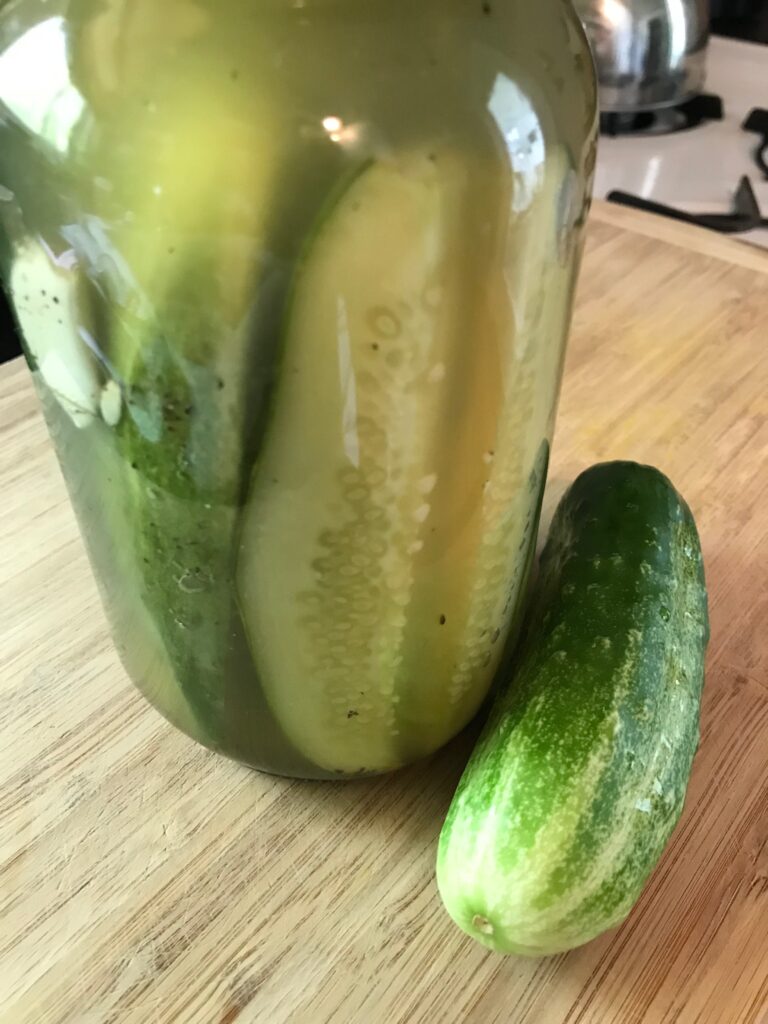
Step 5: Pour salt brine over your veggies in the jar. Pour slowly, a little over 3/4 full, and gently tilt jar around in small circles, working out any air bubbles. Continue slowly adding water up to ‘burp line’ on jar, usually where the mouth begins. Make sure all veggies are securely submerged in brine and that there are no air bubbles.
Step 6: Secure the lid, label and date, and store in a dry, cool place. In our climate, check in 2 days. ‘Burp’ the jar – just untwist the lid, slowly, to release any gases that may build up. Secure lid tightly or it WILL leak. Do this every other day – you are looking for a popped up lid with good gas build-up. The brine should begin to smell like vinegar. Veggies are soft but crisp, with a distinct pickled flavor. Generally, most veggies are done fermenting within 5 – 7 days. Move veggies to fridge to significantly slow down fermentation process. Generally speaking, again, veggies can be kept refrigerated for 2 months or more, although they will continue to age.
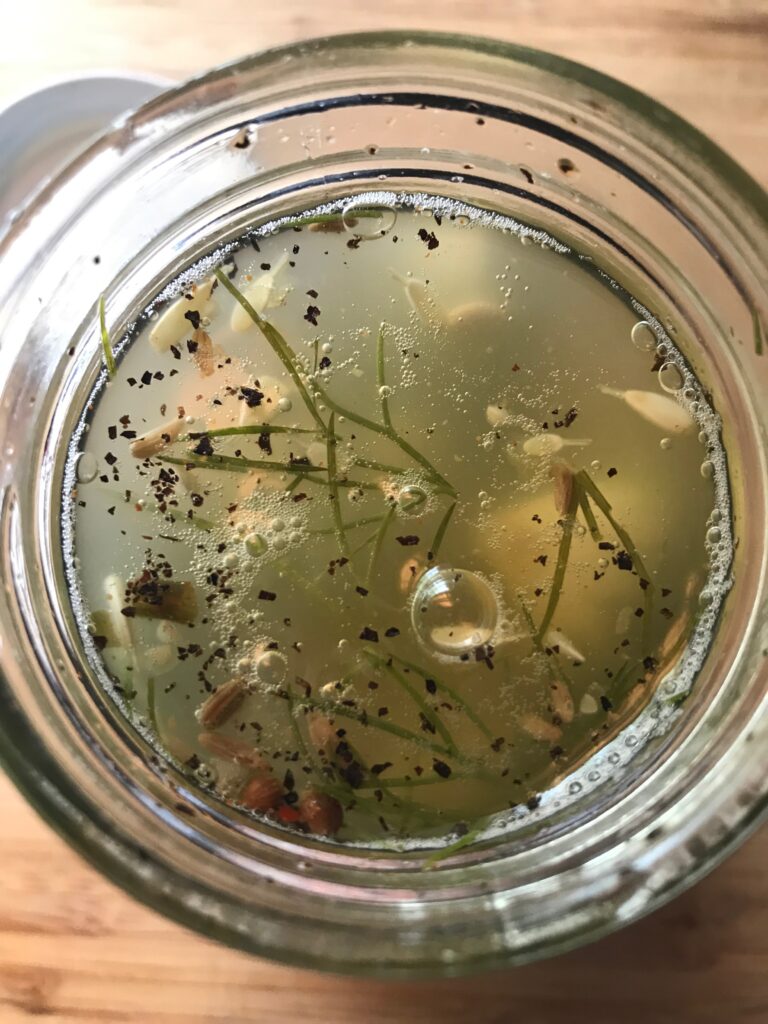
Fermentation, done PROPERLY, is completely safe. The salt brine creates a habitat in which harmful bacteria cannot survive and helpful bacteria can thrive. This helpful bacteria, called Lactobacillus, converts sugars to lactic acid, eventually creating an acidic enough environment to preserve the vegetables. Proper fermentation means using fresh, uncompromised vegetables, clean and sterile utensils and a proper salt-to-water ratio.
According to USDA microbiologist Fred Breidt, Jr., fermented vegetables can be safer than raw vegetables, thanks to the ability of lactic acid, which forms during fermentation, to hunt down and kill any harmful bacteria that might be present. This is a great article from Food Safety News that encourages home fermentation: https://www.foodsafetynews.com/2014/03/fermenting-veggies-at-home-follow-food-safety-abcs/
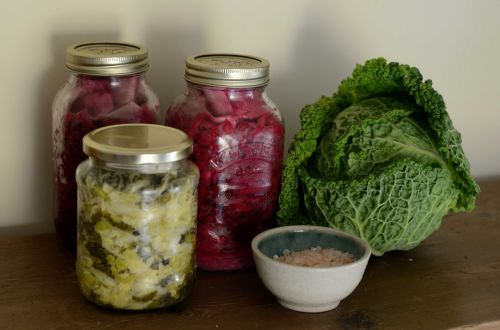
What to Ferment:
You can ferment pretty much anything, but some veggies are better suited for lacto-fermentation than others. Root vegetables like shredded beets, radish, or carrots are great for this fermentation process. So is cabbage (think sauerkraut or kimchi), cucumbers, peppers, eggplant or squash. Ferment mushrooms by blanching in boiling water first. Veggies like broccoli or brussels sprout produce a good bit of gas when fermenting and are best mixed with other veggies. Add 2 tablespoons of apple cider vinegar to okra after lacto-fermenting to cut back their ‘slime’. Ferment garlic cloves and small peppers whole. Fun Fact: garlic will often turn blue when fermenting!

